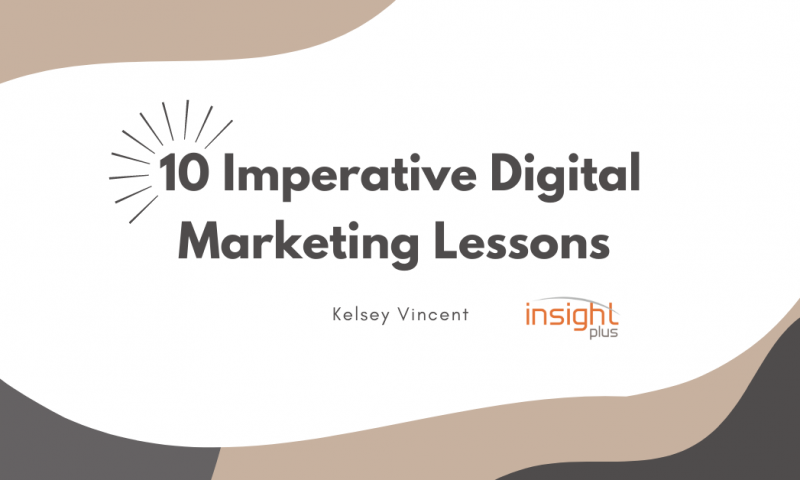Recently I had the privilege of undertaking the Certificate course in Mastering Digital Marketing through London Business School. The course covered a variety of digital topics including (but not limited to) Mobile App Marketing, Search Engine Optimisation (SEO), Personalisation Marketing and Loyalty Marketing.
The tips that follow comprise top 10 things I learnt about digital marketing. Hopefully, these tips will inspire some creative conversations within your marketing team.
- Do not underrate the reach and power of influencers.
Essentially, social media influencers can be separated into three main categories:
– Mega: Movie Stars, Sports Stars, CEO’s etc. (Over 1,000,000 followers), Macro: Models, Lifestyle bloggers etc. (between 100,000 to 1,000,000 followers) and Micro: People with niche/highly engaged followings (between 1000 to 100,000 followers). In a simulation exercise, I worked with both Macro and Micro influencers and was very surprised to find that two influencer posts across a range of platforms yielded the same, if not better, return on investment than a weeks’ worth of my paid social media simulations. - In using influencer marketing, be clear about your expectations.
‘Influencer marketing’ might not be the best fit for every product or brand, and negotiations can sometimes be frustrating, but it is a paid form of digital marketing that can yield significant results. However, preliminary research is vital. Ask influencers for a copy of their ‘media kit’ and be clear about the content you want. Ensure you have a watertight engagement letter prior to engagement. If you don’t have the resources or time to research influencers, consider joining influencer job ‘hubs’ such as REP which enables brands and influencers to connect and collaborate. - Explore the potential for ‘snagging’ customers.
To ‘snag’ a passer-by means putting your brand or product in front of different audiences using digital marketing mechanisms including algorithmic processes (Search Engine Optimisation), sponsored (paid) search, and banner advertising on popular websites, to name a few. The objective is to ‘snag’ a customer’s interest, to entice them to click on your advert and ultimately convert that interest into sales. - Your pay per click advertising must be catchy, creative and deliver cut through.
Pay per click advertising works, mostly via search engines, with advertisers paying a fee each time their advert is clicked on. As obvious as this sounds, too many brands go unnoticed and fail to cut through the clutter with poorly conceived and boring wording/content. Take the time to research current ‘buzz’ words and synonyms which will create ‘catchy’ sentences and unique word plays. - Experiment and test market using Amazon.
If your company or brand has yet to sell online (and even if you’re not sure if there actually is an online market for your products), creating a seller’s portal via online sales giant Amazon or a platform similar is a reasonably economical and effective way to test whether a market exists for your product. - Online selling can be effectively used in a business to business (B2B) environment.
Online selling is becoming more popular and therefore competitive. Finding ways to sell business-to-business through online platforms will help you place your product in front of an entirely new audience, and if done well, can help create new leads, diversify you brand offering, generate creative conversations with marketing departments/business development teams, and result in a significant additional revenue stream. - Create exceptional value for your customers and consistently seek feedback to ensure you are delivering.
While one online sale is satisfying, regardless of the platform, the content you produce must keep customers coming back for you to achieve repeat sales and increased brand advocacy – especially through word of mouth (or ‘word of mouse’). Whether it is by posting more blog content, through online videos or by implementing a loyalty program, you must continually evolve your content and create value to keep your customers engaged and talking about your brand. - Do not ignore user generated content as a powerful digital tool.
Give and you shall receive. Invariably, engaged/satisfied customers will be inclined to endorse your products and services, taking imagery from posts, or writing reviews and testimonials and then posting those to their personal channels. User Generated Content (UGC) is marketing gold, as you can (with appropriate permission from the content owner) re-post this content to your own channels to good effect. - Conduct a bi-annual audit of your digital channels.
Nowadays, consumers can take their time researching and comparing products – and with mobile apps that do this, it’s easier than ever for customers to make informed decisions about the products they are considering. The flip side is that this wealth of information, can cause consumers to be ruthless and if brands or products do not contain the right information or reviews are largely negative, consumers can easily look for the next available option, often regardless of the price. You must diligently conduct a bi-annual audit of your digital channels to ensure information and messages about your product are ‘on song’. - Apply online learning to the training of your people.
The short video, modular style of the London Business School’ program made studying part time very convenient and comparatively easy. Studying online and being able to connect with the course material at any time of the day gives you a greater sense of freedom compared to traditional teaching methods. My experience suggests to me that every organisation/business should think about implementing such an approach into their professional development strategies for staff.


Leave a reply